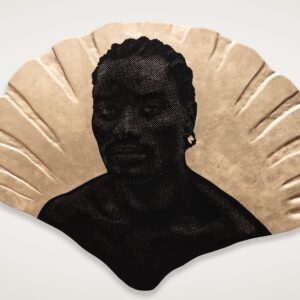An artist website as an online portfolio is a classic and perhaps indispensable tool to gain visibility in the digital world. Whereas a lot of artists simply focus on displaying their work in a straight forward way, others are transforming their actual website into a piece of artwork itself.

Bildrechte: Flickr Yayoi Kusama exhibition at Louisiana Museum, Denmark Kristoffer Trolle CC BY 2.0 Bestimmte Rechte vorbehalten
Unless we are talking about an artist who is already famous, it is clear that every player of the art world needs to promote his work in one way or another. Many well-known open platforms like DeviantArt or websites that provide hosted online portfolios help digital newcomers to make their first steps in the online art world. Having your own website is the next logical step for all those who want to reach a more professional level. IT-companies like 1&1 help to check if a specific domain has already been registered and provide templates that make creating a website a fairly easy job. Available since 2011, the “.art” domain suffix is another tool artists can use to boost the visibility of their online business.
The good news is that a lot of common artistic methods can be represented on the internet. Thanks to the multichannel nature of the digital world, websites can feature pictures, GIFs, videos, text, sound and almost any imaginable kind of visual object. Sculptors are able to take photographs of their work and upload them, performance artists can film their shows and sketchers can digitalize their pictures by scanning them. Only artistic projects that rely on the interaction with the crowd or those which are hard to depict in photographs will, for the most part, remain excluded from digitization.

Bildrechte: Flickr Sign O’ the Times Surian Soosay CC BY 2.0 Bestimmte Rechte vorbehalten
In a time in which users are confronted with a sheer infinite number of websites and as a consequence their attention span is diminishing, artists have a clear advantage in the online world: they can use their creativity in order to make their web space unique and outstanding. There are numerous examples of artist websites that are a piece of artwork themselves.
Bobby Doherty
When landing on Doherty’s page, you don’t really know where you are. The simple numbers 1 to 3 arbitrarily guide you through a portfolio of the photographer’s work mostly featuring colourful still life pictures without explaining anything. You will eventually click your way to the artist’s contact information that states: “Please say hello or anything.” Minimalist humour, lively represented by his online portfolio.
Jodi
Who is Jodi? It doesn’t matter. What first appears on the screen seems to be a broken HTML-code, reinforced in its weirdness through aggressive neon colours. A post-logical message somehow combining a “carpet bombing of Belgrade” and an “Apollo object from outer space” finishes with “you so-called artists can continue to contaminate cyberspace with your childish idiocies”. This is what Jodi’s site won’t bother with: It just confronts you with dancing pop-up windows, static pixel surfaces and glitch pages that redirect to nowhere, celebrating the numeric mystery which Internet has given us. Try using “jodi.org” in combination with an arbitrary number of “w” in front. By the way: Jodi is a Dutch duo, pioneers of digital art.
Michael Manning
Manning’s page is in no way less disturbing than the Jodi universe. Frantically moving objects, glittering spheres of awkward dreams and a good dose of psychedelic nonsense make up the world of the US-American artist. Is this art? Of course it is!
Sara Ludy
Ludy’s page welcomes you with an entirely black screen that offers navigation points like “tours”, “otha” or “field recordings”. This is how atmospheric sounds, playful video art and interesting animations fit into one of the many corners of this original site. Just click around and discover the Californian-based artist’s very special portfolio.

Bildrechte: Flickr circuit_town Tim Simpson CC BY 2.0 Bestimmte Rechte vorbehalten



